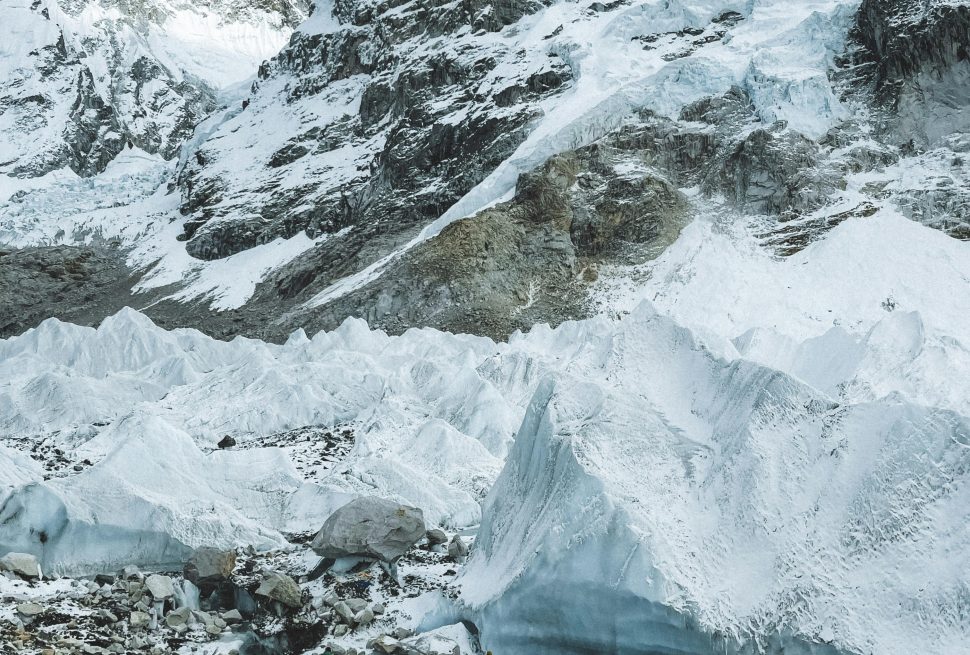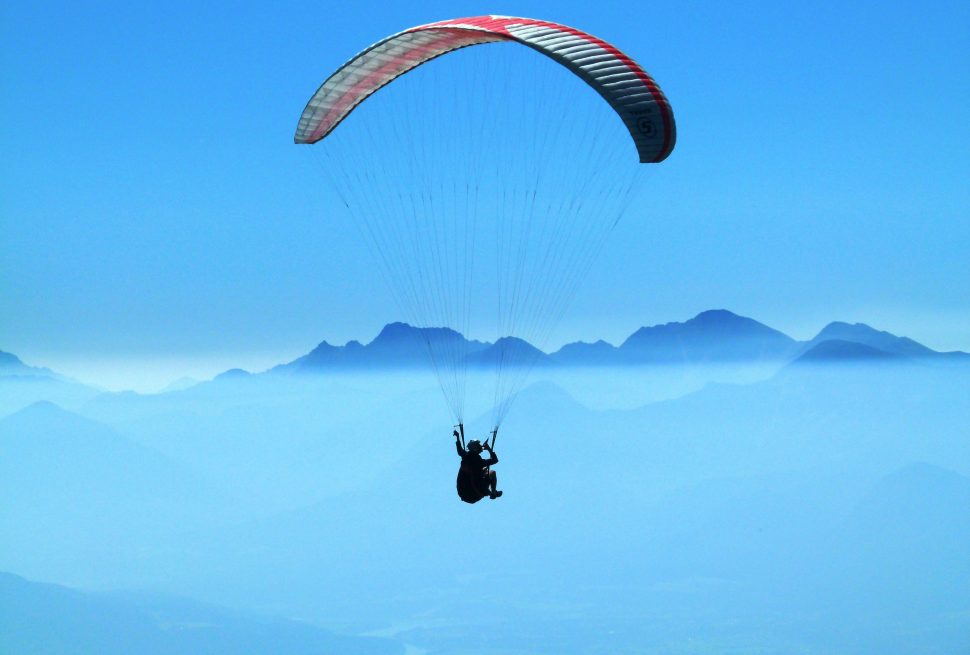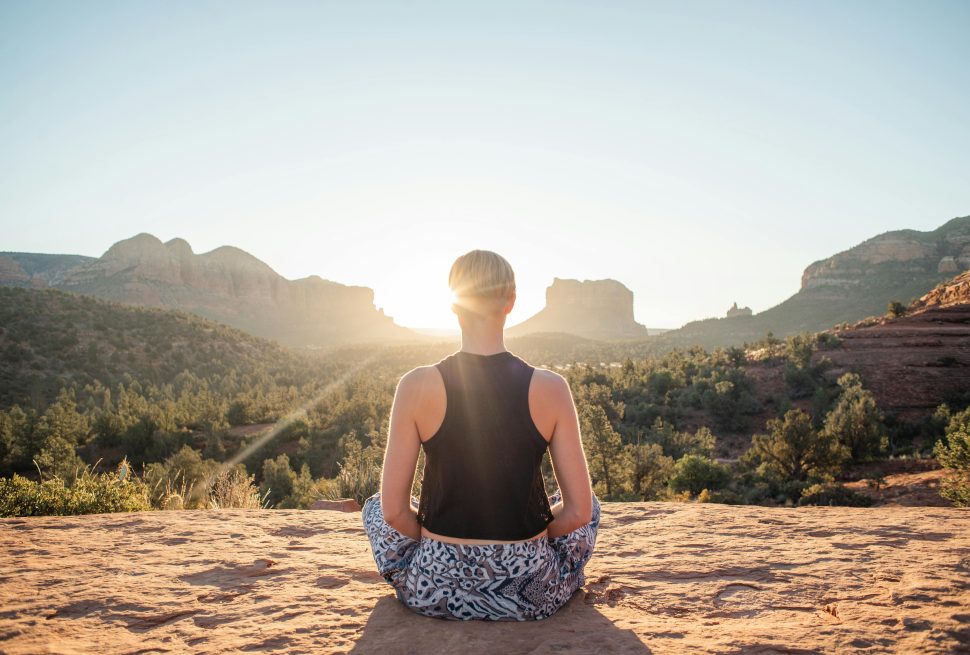When you think of traveling to Nepal, iconic destinations like Everest Base Camp or Annapurna Circuit might come to mind first. However, for the discerning traveler seeking something more profound and off the beaten path, Mu Gompa should undoubtedly earn a spot on your Nepal travel bucket list. This ancient Buddhist monastery, tucked away in the rugged landscapes of Upper Mustang, offers a rare combination of rich cultural heritage, spiritual significance, and breathtaking natural beauty where visitors can delve into.
In this blog, we’ll cover the many reasons why visiting Mu Gompa is not just another trek in Nepal, but once in a lifetime experience that will leave you spiritually refreshed and culturally enriched.
Unearth the Hidden Gem: Why Mu Gompa Stands Apart
In a world where well-trodden paths attract most of the attention, finding a hidden gem like Mu Gompa is a destination that can be compared to discovering a treasure lost in time. The trek to Mu Gompa leads you into the remote Mustang region, an area that was once part of an ancient kingdom known as the Kingdom of Lo. The region is still steeped in traditions that predate modern Nepal, and the journey to Mu Gompa takes travelers through some of the most desolate yet stunning landscapes in the world.
Far removed from the bustling trekking circuits of Everest or Annapurna, the Mu Gompa trek offers seclusion, untouched nature, and an intimate glimpse into Tibetan Buddhist culture. If you are a traveler who values authenticity, peace, and spiritual connection, then Mu Gompa is an ideal destination. Unlike mainstream tourist routes, you won’t find crowds here—just raw, untouched beauty and a chance to experience Nepal as it once was.
The Spiritual Heart of Upper Mustang: An Immersive Buddhist Experience
Mu Gompa is not just another destination; it is a spiritual sanctuary for those seeking peace and enlightenment. Founded centuries ago, the monastery continues to play a central role in the spiritual life of the local people, as well as for Tibetan Buddhist monks who come to practice in its serene and isolated environment. One of the unique aspects of Mu Gompa is its connection to the Nyingma school of Tibetan Buddhism, the oldest of the four schools, which emphasizes deep meditation and spiritual transformation.
For travelers, visiting Mu Gompa offers an opportunity to step into the life of a monk—if only for a few days. The tranquility that surrounds the monastery, nestled among high-altitude deserts and towering mountain ranges, is unmatched. Many visitors come here to meditate, practice mindfulness, and disconnect from the stresses of modern life.
Imagine waking up to the sound of prayer wheels turning, with the Himalayan sunrise casting golden hues on the ancient stone walls of the monastery. The air is crisp, the sky impossibly blue, and the peace that envelops you is unlike anything you’ve ever felt. Whether you’re a seasoned spiritual seeker or someone looking for a break from the everyday, Mu Gompa offers a transformative experience.
Adventure Meets Solitude: Trekking to Mu Gompa
While the spiritual side of Mu Gompa is undoubtedly its biggest draw, getting there is an adventure in itself. The trek to Mu Gompa takes you through some of the most rugged and remote terrains of the Upper Mustang region, an area that was once restricted to outsiders until the early 1990s. The trail is flanked by dramatic canyons, towering cliffs, and the barren yet beautiful landscape that characterizes this Himalayan frontier. The journey is moderately difficult in the lower Tsum but as you climb to the upper Tsum, difficulty is slightly increased due to more cold and powerful wind, steep trail and lower oxygen level.
Unlike the more well-trodden paths of the Everest Base Camp or Annapurna circuit, the trek to Mu Gompa is one for the adventurous souls who crave solitude. It’s not uncommon to trek for hours without encountering another traveler. As you ascend towards the monastery, the silence is broken only by the occasional flutter of prayer flags in the wind and the distant sound of mountain goats clattering across the rocky cliffs.
But solitude doesn’t mean isolation. Along the way, you’ll pass through traditional Tibetan villages like Chhoser and Nubri, where you can immerse yourself in local culture, meet the warm-hearted residents, and even stay in local tea houses for an authentic experience. The remoteness of Mu Gompa has helped it retain its traditional way of life, making it a truly immersive cultural adventure.
A Portal to the Past: Historical Significance of Mu Gompa
Mu Gompa is a living monument to centuries of Tibetan Buddhist history. The monastery’s remote location has helped it remain largely untouched by modern influences, preserving its rich cultural and religious heritage. Founded more than 500 years ago, Mu Gompa continues to house ancient Tibetan texts and artifacts that date back centuries, making it an invaluable resource for both historians and spiritual scholars.
The architecture of Mu Gompa is another fascinating aspect of this ancient monastery. Built using traditional Tibetan techniques, the monastery blends seamlessly into the rugged landscape that surrounds it. The prayer halls are adorned with intricate murals, thankas (religious paintings), and statues of various Buddhist deities, each with its own story to tell.
While the exterior of Mu Gompa may seem austere at first glance, the inner sanctum reveals an incredible world of color, symbolism, and devotion. For visitors, the chance to walk through these halls, hear the chanting of monks, and feel the weight of history in the air is nothing short of magical. If you are passionate about history or cultural exploration, Mu Gompa offers a rare opportunity to witness Tibetan Buddhist practices in their purest form.
An Off-the-Beaten-Path Trekking Experience in Upper Mustang
One of the most compelling reasons to visit Mu Gompa is the opportunity it provides for an off-the-beaten-path trekking experience. Unlike the crowded trails of more well-known routes, the trek to Mu Gompa is remote, tranquil, and allows travelers to connect deeply with nature and the local culture. The journey starts in the ancient town of Lo Manthang, the former capital of the Mustang Kingdom, and gradually leads you into the high-altitude desert of Upper Mustang, passing through small, isolated Tibetan villages and stunning landscapes that have been shaped by centuries of wind and water erosion.
You will encounter CantiLever Bridge and a long vertical walk through steep trails of wet stones that lasts for most probably 5-6 hours long. The long walk through Chumling is fascinating as you will encounter beautiful rivers and forests everywhere. The cloudy weather adds up a new layer of excitement.
The remoteness of Upper Mustang adds to its charm. The landscape is a mixture of deep gorges, cliffs with eroded, almost otherworldly rock formations, and expansive, windswept valleys. The beauty of the trek is not just in the destination but in the journey itself. Each step reveals a different side of Mustang’s unique environment—from the desert-like plains to the jagged peaks of the surrounding mountains.
In terms of difficulty, the trek to Mu Gompa is moderate to challenging, mainly due to the high altitude and rugged terrain. However, the rewards far outweigh the physical effort. Along the way, trekkers will encounter the stunning Kali gandaki Gorge, which is one of the deepest gorges in the world. The isolated setting provides a unique opportunity to experience nature at its most pristine.
Authentic Encounters with Local Culture and Traditions
One of the highlights of trekking to Mu Gompa is the opportunity to interact with the local people. The region is home to the Tibetan ethnic group, whose culture has been preserved for centuries. As you trek through traditional Tibetan villages, you will be welcomed into the homes of locals, who often offer travelers tea and food as a gesture of hospitality. This is an incredible way to immerse yourself in the local culture, far removed from the more commercialized areas of Nepal.
In these remote villages, life follows a slower pace, much like it has for centuries. The villagers are primarily engaged in farming, yak herding, and small-scale trading. This simplicity and close connection to the land and their Tibetan Buddhist roots offer visitors a chance to witness a way of life that has remained largely unchanged for generations.
Traditional festivals such as the Tiji Festival, held in Lo Manthang, are a great way to experience the vibrant cultural heritage of the region. While the festival itself does not take place at Mu Gompa, the surrounding villages and monasteries all participate, making it an enriching experience for those in the area.
Ethical and Sustainable Travel: Supporting Local Communities
Traveling to Mu Gompa is not just about adventure and spiritual exploration; it’s also an opportunity to contribute to the preservation of this unique region. The Upper Mustang region was once a prosperous trading route between Tibet and Nepal, but modern development has bypassed it, leaving the local economy dependent on agriculture and tourism.
By choosing to trek to Mu Gompa, you are supporting local businesses such as tea houses, guides, and porters, who rely on tourism for their livelihood. In recent years, there has been a growing focus on promoting sustainable tourism in Nepal, with efforts to protect both the environment and the cultural heritage of remote regions like Mustang.
Travelers are encouraged to follow Leave No Trace principles while trekking in the area. This means taking care to minimize your impact on the environment by carrying out all waste, respecting local customs, and choosing eco-friendly accommodations. Many of the guesthouses in Upper Mustang are locally owned, and your stay helps to support these communities and ensures that their traditional way of life can continue for future generations.
How to Plan Your Journey to Mu Gompa: Practical Tips for Travelers
Visiting Mu Gompa is an experience of a lifetime, but proper planning is essential to make the most of your trip. Since the region is remote and less developed than other trekking areas in Nepal, there are a few things you should keep in mind.
- Permits: Upper Mustang is a restricted area, so you’ll need a special permit to enter. This is separate from the Annapurna Conservation Area permit that’s required for other treks in the region. While you book your trip with Manasukh, we will take care of all the necessary permits.
- Trekking Season: The best time to visit Mu Gompa is during the spring (March to May) and autumn (September to November) months. During these periods, the weather is mild, and the skies are clear, offering the best views of the surrounding mountains. Winters in Upper Mustang can be harsh, with temperatures dropping below freezing, so it’s not recommended for most travelers.
- Accommodations: While trekking to Mu Gompa, you’ll stay in basic but comfortable tea houses run by local families. These tea houses offer simple meals like dal bhat (lentil soup with rice) and hot tea. There are no luxury accommodations in the region, so be prepared for a more rustic experience.
- Altitude: Since Mu Gompa is situated at an altitude of over 3,700 meters, altitude sickness can be a concern for travelers. It’s important to take your time and allow for proper acclimatization during your trek. Be sure to stay hydrated and consult your guide if you experience any symptoms of altitude sickness.
The Unique Geographical Landscape Surrounding Mu Gompa
Mu Gompa is located in one of the most distinctive landscapes you will encounter in Nepal. The arid, high-altitude deserts of Upper Mustang are bordered by towering cliffs, deep gorges, and jagged peaks, offering a stark contrast to the lush green valleys and forests typical of the more popular trekking regions such as Annapurna or Everest. The remote location means that the natural beauty of the area is largely untouched by modern development, making the experience feel like stepping into another world.
This dramatic landscape is home to many unique geological features, such as the striking red cliffs of the region, which are dotted with mysterious caves that were once used as homes, monasteries, or burial sites. The caves are an archaeological wonder, with some believed to date back thousands of years, adding a layer of historical intrigue to your trek. The barren, wind-swept valleys and towering cliffs create an otherworldly atmosphere that will make you feel like you’re trekking through a lost kingdom.
Trekking to Mu Gompa provides a front-row seat to these awe-inspiring natural formations. As you continue your journey through the rugged terrain, you’ll encounter panoramic views of some of the most beautiful mountains in the world, including the Annapurna and Dhaulagiri ranges. The stark beauty of the landscape is enhanced by the contrast between the arid desert and the snow-capped peaks that bloom in the distance.
Discover the Lesser-Known Upper Tsum Valley
A hidden treasure of the trek to Mu Gompa is the Upper Tsum Valley, an off-the-beaten-path destination that provides a more secluded and intimate trekking experience. Known as the “Hidden Valley,” Upper Tsum is renowned for its rich cultural heritage and spiritual significance. The valley is home to several ancient monasteries, prayer walls, and chortens (Buddhist stupas), making it a perfect destination for those interested in Tibetan Buddhism and the spiritual traditions of the region.
In contrast to the more commercialized trekking areas, the Upper Tsum Valley remains largely untouched by tourism. The residents of this valley, primarily of Tibetan descent, continue to live in close harmony with nature and adhere to their traditional way of life. The valley is a serene and tranquil place, offering travelers the opportunity to explore isolated monasteries, interact with monks, and experience the authentic culture of the Tsumba people.
As you trek towards Mu Gompa, consider extending your journey to include a visit to the Upper Tsum Valley. The valley is home to other significant monasteries, such as Rachen Gompa and Gumba Lungdang, both of which provide incredible insight into the spiritual life of the region. The unique beauty and spiritual significance of the Upper Tsum Valley make it a worthwhile addition to your trek.
Mu Gompa: A Haven for Photography Enthusiasts
For photography enthusiasts, Mu Gompa offers a visual feast. The dramatic landscape, with its towering cliffs, ancient caves, and remote monasteries, provides endless opportunities to capture breathtaking images. The high-altitude desert terrain, combined with the rich cultural heritage of the region, creates stunning contrasts that are perfect for both landscape and cultural photography.
The prayer flags fluttering in the wind, the monks in their traditional robes, and the intricate details of the monastery’s architecture provide rich visual storytelling opportunities. The surrounding mountains, particularly during sunrise and sunset, cast beautiful light and shadow over the valley, creating ethereal scenes that are a dream for any photographer.
Another must-capture feature is the sky in this region. Due to the high altitude and lack of pollution, the sky over Upper Mustang is incredibly clear, making it a fantastic location for astrophotography. Not only that, the trail itself offers a great picturesque view and one of them are hills covered in mist. At night, the stars shine brightly, offering a mesmerizing view of the Milky Way above the monastery—a truly magical sight for those lucky enough to witness it.
Whether you’re an amateur photographer or a professional looking to expand your portfolio, the trek to Mu Gompa offers countless opportunities to capture unforgettable moments.
A Journey to Remember: Why Mu Gompa Should Be Your Next Destination
As you plan your next adventure in Nepal, Mu Gompa stands out as a unique and transformative experience that offers more than just physical exploration. It’s a journey of the soul, where the ancient meets the modern, and where nature and spirituality converge. Unlike the more commercial trekking routes in Nepal, Mu Gompa offers solitude, cultural immersion, and a deep connection with the land and people living in that community.
Visiting Mu Gompa is not just about the destination; it’s about the journey through one of the most remote and spiritually rich regions of the world. Whether you’re seeking adventure, spiritual growth, or a deeper understanding of Nepal’s cultural heritage or just a break from everyday life, Mu Gompa is a suited place as it provides all of that and even more.
For those looking to travel sustainably, support local communities, and experience Nepal in its rawest, most authentic form, trekking to Mu Gompa is an unforgettable experience that will leave a lasting impact on your heart and mind. Add Mu Gompa to your Nepal travel bucket list, and embark on a journey that will not only challenge your body but also enrich your soul.
Conclusion
Mu Gompa is a hidden gem that stands apart from the typical tourist routes of Nepal. Its rich spiritual significance, remote location, and breathtaking landscapes make it a must-visit for travelers seeking a deeper connection with the country’s Buddhist heritage and untouched natural beauty. Whether you’re a spiritual seeker, an adventure enthusiast, or a history buff, Mu Gompa has something special to offer.
As one of the lesser-known trekking destinations in Nepal, Mu Gompa is ideal for those who want to escape the crowds and immerse themselves in a more intimate and personal experience. The journey to Mu Gompa is not just about trekking—it’s about exploring a different side of Nepal, one that is rich in culture, tradition, and spirituality.Ready to experience the magic of Mu Gompa? Let Manasukh help you craft the perfect travel itinerary that will take you to this incredible destination, ensuring that you have an unforgettable journey through the heart of Upper Mustang.



